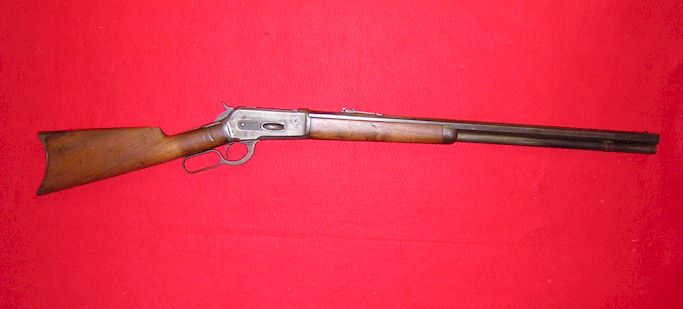
 |

![]()
Introduction | History of Winchester Guns | Models |
Variations
Outline of Features | Condition |
Diagrams / Pictures |
![]()
Condition of FirearmsStep 3: Determine the Condition of Your Firearm |
|||||||||||||||
|
You will find many ways of describing the condition of firearms -- some using
percentages and some just descriptive words. All methods are somewhat
subjective. For your purpose, read the descriptions of the categories
carefully and then select the one that best fits the gun you are appraising.
Since we are dealing only with old guns, we will use the following: |
|
||||||||||||||
|
New In Box (NIB): The gun is in the original sale box. All original parts, including sights and minor parts are brand new. The finish of both metal and wood is original and at 100%. The lettering is sharp and clear and any design on the metal and wood is sharp and clear. There should also be documentation available on the gun, sometimes with price tags and number on box matches serial number on the gun. A very rare find in older guns. Excellent:Very Good: A "very good" gun is in perfect working condition with no appreciable wear on working surfaces, no corrosion or pitting and only very minor scratches. All original parts with at least 80% of the original finish. Original metal surfaces are smooth. Lettering and designs are clear. Wood may be slightly scratched or bruised. There may be some very minor repairs or alterations. Good: Some minor replacement parts are acceptable, but all parts must be working. The metal may be smoothly rusted or lightly pitted in places, and the gun may be cleaned and partially re-blued, although at least 50% of the original factory finish must be evident. Lettering and design is legible, and the wood may be refinished, scratched, bruised, or minor cracks repaired. Gun is in good and safe working order. The bore may have some wear and pitting. Fair: Some major parts may be replaced. There may be some minor parts missing. Some rust on the metal and/or lightly pitted. The gun may have been vigorously cleaned or re-blued. Edges of the metal may be rounded and worn, and principal lettering and design may be partly obliterated. Wood is scratched, bruised, cracked or repaired. In safe working order or easily repaired so that the gun is restored to working order. If your gun has major repairs, alterations or non-factory additions or a recent refinishing, it is graded in this class. Poor: Major and minor parts replaced and there may be major parts required and extensive restoration necessary. Metal may be deeply pitted and the principal lettering and design is obliterated. Wood may be badly scratched, bruised, cracked or broken. The gun may be mechanically inoperative. A poor gun is generally not desired by collectors, although there may be some value in the parts. A poor gun may make a very nice "wall hanger." |
|||||||||||||||
Step #4 Click Here to Find Value and/or Date of Manufacture If you do not have all your information for the appraisal, just return to Step #1, Step #2 or Step #3. You will need to know the model, variation and condition of your gun to determine the value in Step #4. |
|||||||||||||||